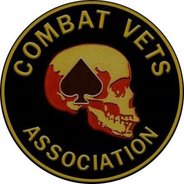Bravo Bulldogs Beware!
Study: Sarin at root of Gulf War syndrome
As benefits administrators, officials and politicians argue the worthiness of studies on Gulf War syndrome, researchers say they have no doubts that they’ve found the root of the problem.Information About Khamisiyah
Sarin gas.
And they have advice for as many as 300,000 troops exposed to small doses of sarin in 1991: Don’t use bug spray, don’t smoke and don’t drink alcohol.
J. Remodeling Effort: January 1998 – March 2000 (Figure 42)Distinct Army & Air Force Units in Khamisiyah 2000 Hazard Area
Comparing each day’s hazard area from March 10 to 13, 1991.
Day 1: March 10, 1991 (Figures 43 – 44)
The 1997 hazard area generally extended in a north-south direction. Based on the wind models, the hazard area extended south-southwest almost 300 kilometers into Saudi Arabia, east of the city of Hafir Al Batin. The 2000 hazard area is divided in two due to slight differences in the wind patterns predicted by the meteorological models but generally follows a north-south axis. The hazard area extends approximately the same distance but to the northwest of Hafir Al Batin. However, the 2000 hazard area extended further to the east and south into Kuwait indicating possible exposure to US personnel not included in the 1997 hazard area. Approximately 70 percent of the 321 kilograms of chemical warfare agent modeled in 2000 had been dispersed into the atmosphere by the end of Day 1.
Day 2: March 11, 1991 (Figures 45 – 46)
Both models’ hazard areas have similar shapes. The 1997 model did not consider sunlight effects on the hazard area, but we added these effects for the 2000 modeling at the recommendation of the 1997 peer review panel. For the 2000 hazard area, the dispersion modeling assumed ultraviolet light from sunlight decayed the chemical warfare agent and thus reduced the size of the 2000 hazard area. Improved weather models reflected a shift in the wind to the south, which kept the 2000 hazard area mainly to the north and west of King Kalid Military City (KKMC), unlike the 1997 hazard area, which included KKMC and a much larger area to the west. Later nerve agent emissions evaporating from the soaked wood and soil in the Pit generated the four small hazard areas in the vicinity of Al Bussayyah and around Khamisiyah in the 2000 model. Approximately 89 percent of the 321 kilograms of the chemical warfare agent modeled in 2000 had dispersed into the atmosphere by the end of Day 2.
March 10-13, 1991
Germany
Company A, 1st Signal Battalion Company B, 1st Signal Battalion









1 comment:
The biggest issue I have with the study is the list of affected units. For example, they list HHC, 11th Sig Bde from AZ, but no other elements of 11th Sig. I find that hard to believe based on what I recall from being attached to 11th Sig Bde.
I doubt that this listing is anywhere near being complete and also does not account for the issue such as soldiers that were located at small sites such as repeater sites, soldiers assigned to task forces, etc.
From this, I think the list should be a good "first start", but a lot more effort needs to go into determining affected SOLDIERS, not just affected UNITS.
Post a Comment